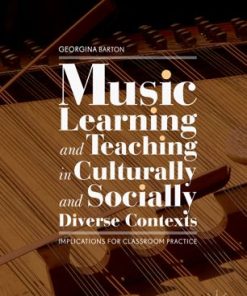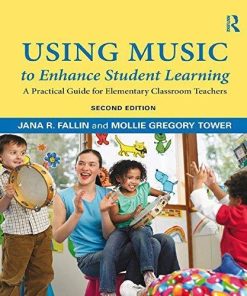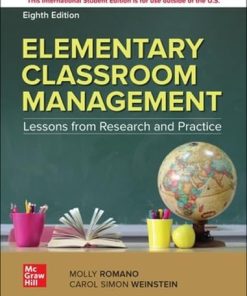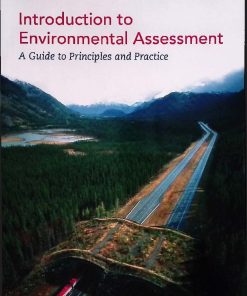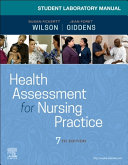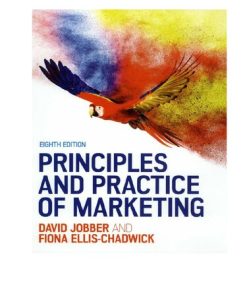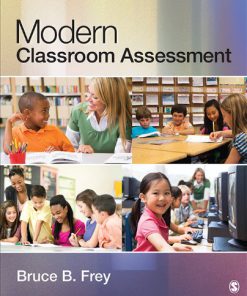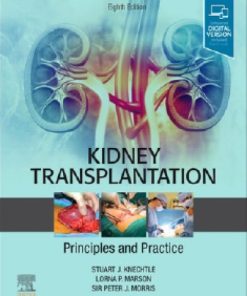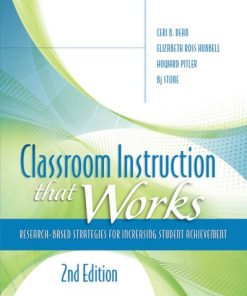(EBOOK PDF)Classroom Assessment Principles and Practice that Enhance Student Learning and Motivation 8th Edition by James McMillan 9780138056957 0138056951 full chapters
$50.00 Original price was: $50.00.$25.00Current price is: $25.00.
Classroom Assessment Principles and Practice that Enhance Student Learning and Motivation 8th Edition by James McMillan – Ebook PDF Instant Download/Delivery: 9780138056957, 0138056951
Full download Classroom Assessment Principles and Practice that Enhance Student Learning and Motivation 8th Edition after payment

Product details:
• ISBN 10:0138056951
• ISBN 13:9780138056957
• Author:James McMillan
Classroom Assessment
Principles and Practice that Enhance Student Learning and Motivation
Classroom Assessment presents classroom assessment principles in a non-technical, engaging way where you learn and practice skills as you read. It draws on new research and technologies to show how to effectively use classroom assessment to improve student learning and motivation. Practical examples, suggestions and case studies demonstrate real-world strategies and techniques. The 8th Edition integrates equity and cultural relevance in every chapter, with more coverage of sociocognitive and sociocultural tenets of learning and motivation as well as responsive assessment practices. New vignettes, written by K through 12 National Board-Certified teachers, show first-hand how to apply effective assessment to real classroom situations.
Classroom Assessment Principles and Practice that Enhance Student Learning and Motivation 8th Table of contents:
Chapter 1 The Role of Assessment in Teaching and Learning
Learning Objectives
The Bigger Picture Context of Classroom Assessment
21st-Century Knowledge, Skills, and Dispositions
Technology
Principles of Cognitive and Sociocultural Theories of Learning and Motivation
Standards-Based Education
High-Stakes Testing
Data Literacy
Equity
Integrating Instruction and Assessment
The Realities of Teaching
Instructional Decision Making and Assessment
Ambitious Teaching
Components of Classroom Assessment
Purpose
Gathering Evidence
Interpretation
Use
Diagnosis
Grading
Instruction
Recent Trends in Classroom Assessment
Teachers’ Classroom Assessment and Grading Practices Decision Making
Teachers’ Beliefs and Values
External Factors
Students’ Perceptions of Assessment
Assessment Literacy
Summary
Self-Instructional Review Exercises
Applied Action Exercises
Chapter 2 Standards and Cognitive Learning Targets
Learning Objectives
Knowing Where Your Students Are Going
Revisiting the Big Picture
Educational Outcomes
Educational Goals
Standards
State Standards
Common Core State Standards Initiative
Deconstructing Standards
Educational Objectives
Taxonomies of Educational Objectives
Bloom’s Taxonomy of Objectives
Bloom’s Revised Taxonomy of Objectives
Marzano and Kendall’s New Taxonomy
Depth of Knowledge Framework
Student Learning Objectives
Cognitive Learning Targets
Knowledge and Simple Understanding
Declarative Knowledge and Simple Understanding
Procedural Knowledge and Simple Understanding
Deep Understanding
Reasoning
Criteria for Selecting Learning Targets
Summary
Self-Instructional Review Exercises
Applied Action Exercises
Chapter 3 High-Quality Classroom Assessment
Learning Objectives
What Is High-Quality Classroom Assessment and Why Is It Important?
Clear and Appropriate Learning Targets
Alignment of Assessment Methods and Learning Targets
Assessment Methods
Matching Learning Targets with Methods
Knowledge and Simple Understanding
Deep Understanding
Reasoning
Skills
Products
Affect/Dispositions
Validity
What Is Validity?
How Is Validity for Classroom Assessment Determined?
Content-Related Evidence
Criterion-Related Evidence
Consequential Evidence
Reliability/Precision
What Is a Reliable/Precise Score?
Assessment Error
How to Improve Classroom Assessment Reliability/Precision
Fairness/Equity
Transparency: Student Knowledge of Learning Targets and Assessments
Opportunity to Learn
Prerequisite Knowledge and Skills
Avoiding Student Stereotyping
Avoiding Bias in Assessment Tasks and Procedures
Accommodating Students with Special Needs and English Learners
A Model of Fairness in Classroom Assessment
Positive Consequences and Practicality
Positive Consequences for Students and Teachers
Alignment with Standards
Practicality and Efficiency
Teacher Familiarity with the Method
Time Required
Complexity of Administration
Ease of Scoring
Ease of Interpretation
Managing Classroom Assessment
Summary
Self-Instructional Review Exercises
Applied Action Exercises
Chapter 4 Informal/Embedded Formative Assessment
Learning Objectives
What Is Formative Assessment?
The Process of Formative Assessment
Characteristics of Formative Assessment
Types of Formative Assessment
Gathering Evidence for Informal/Embedded Formative Assessment
Observation
Assessing Nonverbal Behavior
Facial Expressions
Body Language, Signals, and Gestures
Assessing Voice-Related Cues
Sources of Error in Moment-by-Moment Observation
Oral Questioning, Dialogue, and Discussion
Nature and Purpose of Oral Questioning for Informal/Embedded Formative Assessment
Characteristics of Effective Questioning for Informal/Embedded Formative Assessment
Practical Techniques for Eliciting Evidence for Informal/Embedded Formative Assessment
Providing Effective Feedback for Informal/Embedded Formative Assessment
Types of Feedback
Target-Referenced
Scaffolded
Self-Referenced
Standards-Referenced
Determining the Nature of the Feedback
Amount
Timing
Mode
Audience
Type of Task
Differentiated Informal/Embedded Formative Feedback
Learner Level of Ability
Grade Level
Subject
What About Giving Praise?
Summary
Self-Instructional Review Exercises
Applied Action Exercises
Chapter 5 Formal Formative Assessment
Learning Objectives
Formal Formative Assessment Revised
Preassessments, Homework, and Seatwork
Structured Exercises
Pretests
Homework
Seatwork
Quizzes, Tests, Papers, and Projects
Quizzes
Unit Tests, Projects, and Papers
Practical Techniques and Digital Tools
Online Polling
Virtual Quizzing
Social Media, Mems, and Emojis
Large-Scale Summative Assessments Used Formatively
Common Assessments
Interim Assessments
Year-End Assessments
Feedback Reconsidered
Feedback Types and Modes of Delivery
Anticipating Feedback
Instructional Adjustments
Mastery Learning
Differentiated Instruction
Response to Intervention
Learning Progressions
Summary
Self-Instructional Review Exercises
Applied Action Exercises
Chapter 6 Planning and Implementing Summative Classroom Assessments
Learning Objectives
Summative Assessment Revised
Planning Summative Assessment
Representative Sampling for Tests
Use of an Assessment Blueprint
Number and Length of Assessments
Grade Level
Type of Item
Format: Paper-and-Pencil or Digital?
Use of Assessments Provided by Textbook and Test Publishers, Companies, and School Districts
Preparing Students for Classroom Summative Assessments
Assessment-Taking Skills and Testwiseness
Item Type and Format
Assessment Anxiety
When to Construct Summative Assessments
Putting Together, Administering, and Using Summative Assessments
Putting Together Summative Assessments
Directions
Item Arrangement
Physical Layout
Administering Summative Assessments
Using Summative Assessment Results
Summary
Self-Instructional Review Exercises
Applied Action Exercises
Chapter 7 Using Large-Scale Standards-Based, Growth and Other Standardized Tests
Learning Objectives
What Are Standards-Based and Standardized Tests?
Standards-Based Tests
State Standards-Based Tests
National Standards-Based Tests
Interim Assessments
Growth Assessments
Standardized Achievement, Readiness, and Aptitude Tests
Norm-Referenced Achievement Test Batteries
Aptitude Tests
Readiness Tests
Understanding and Interpreting Standardized Test Scores
Test Score Report Formats
Interpreting Standards-Based and Standardized Scores
Standard Error of Measurement
Alignment
Standards-Based Interpretations
Interpreting Test Reports for Parents/Guardians
Student Test-Taking Skills and Strategies and Test Administration
Test-Taking Skills and Strategies
Administering Standardized Tests
Summary
Self-Instructional Review Exercises
Applied Action Exercises
Chapter 8 Selected-Response Assessment: Multiple-Choice, Binary-Choice, Matching, and Interpretive Items
Learning Objectives
Selected-Response Items—Advantages and Disadvantages
Guidelines for Writing Selected-Response Items
Multiple-Choice Items
Assessing Knowledge and Simple Understanding
Assessing Application
Assessing Reasoning
Binary-Choice Items
Assessing Knowledge and Simple Understanding
Assessing Application
Assessing Reasoning
Matching Items
Selected-Response Interpretive Exercises
Technology-Enhanced and Culturally Relevant Selected-Response Items
Technology-Enhanced Items
Avoiding Cultural Irrelevance and Bias
Traditional Sources of Bias
Influence of Culture and Prior Experience
Summary
Self-Instructional Review Exercises
Applied Action Exercises
Chapter 9 Constructed-Response Assessment: Completion, Short-Answer, and Essay Items
Learning Objectives
Completion Items
Short-Answer Items
Assessing Knowledge and Simple Understanding
Assessing Deep Understanding and Reasoning
Technology-Enhanced Scoring
Essay Items
Constructing/Selecting Essay Items
Scoring Essays
Avoiding Cultural Irrelevance and Bias
Traditional Sources of Bias
Influence of Culture and Prior Experience
Summary
Self-Instructional Review Exercises
Applied Action Exercises
Chapter 10 Performance Assessment: Projects, Papers, and Presentations
Learning Objectives
What Is Performance Assessment?
Characteristics of Performance Assessments
Types of Performance Assessments
Strengths and Limitations of Performance Assessments
Strengths
Limitations
Learning Targets for Performance Assessments
Deep Understanding
Reasoning
Skills
Communication and Presentation Skills
Psychomotor Skills
Digital Skills
Products
Constructing Performance Tasks
Step 1: Identify the Performance Task
Restricted-Type Tasks
Extended-Type Tasks
Step 2: Prepare the Task Description
Step 3: Prepare the Performance Task Question or Prompt
Judging Student Performance
Performance Criteria
Scoring and Interpreting
Checklists
Rating Scales
Rubrics
Developing Rubrics
Holistic or Analytic?
Summary
Self-Instructional Review Exercises
Applied Action Exercises
Chapter 11 Portfolios: Paper and Digital
Learning Objectives
What Are Portfolios?
What Are the Advantages and Disadvantages of Using Portfolios?
Advantages
Disadvantages
Planning, Implementing, and Evaluating Portfolios
Determine Purpose
Learning Targets
Uses
Identify Physical and/or Digital Structure
Determine Nature of the Content
Determine Student Self-Reflective Guidelines and Scoring Criteria
Implementing Portfolio Assessment
Review with Students
Supply Portfolio Content
Structure Student Self-Reflection
Evaluation and Feedback
Checklists of Contents
Portfolio Structure Evaluation
Evaluations of Individual Entries
Evaluation of Entire Contents
Student–Teacher Conferences
Digital Portfolios and Badges
Digital Portfolios
Digital Badges
Summary
Self-Instructional Review Exercises
Applied Action Exercises
Chapter 12 Assessing Social and Intrapersonal Dispositions and Skills
Learning Objectives
Are Social and Intrapersonal Dispositions and Skills Important?
What Are Social and Intrapersonal Disposition and Skill Learning Targets?
Intrapersonal Disposition Learning Targets
Attitudes
Values
Motivation
Self-Concept and Self-Esteem
Self-Efficacy
Interpersonal (Social) Skill Learning Targets
Methods of Assessing Social and Intrapersonal Dispositions and Skills
Teacher Observation
Unstructured Observation
Structured Observation
Teacher Interviews
Student Self-Report Questionnaires and Surveys
Constructed-Response Formats
Selected-Response Formats
Student Self-Assessment
What Is Self-Assessment?
Self-Assessment Strategies
Frequency Checklists
Templates
Sentence Completion
Rating Scales
Summary
Self-Instructional Review Exercises
Applied Action Exercises
Chapter 13 Assessment for Students with Disabilities and Exceptionalities
Learning Objectives
Legal Mandates
Disability Categories and Exceptionalities
Intellectual Disability
Sensory Impairments
Speech and Language Disorders
Physical and Health Impairments
Specific Learning Disability
Emotional and Behavioral Disorders
Autism
Identifying Students for Special Education Services
Prereferral
Formal Referral
Individualized Education Programs (IEPs)
Assessment and Grading Accommodations
Assessment Challenges for Students with Disabilities
Comprehension Support
Auditory Processing Support
Visual Processing Support
Time Constraints
Anxiety
Embarrassment
Variability of Behavior
Specific Accommodations
Universal Design for Learning (UDL)
Test Directions, Construction, and Format
Short-Answer and Essay Items
Multiple-Choice Items
Binary-Choice Items
Completion Items
Performance Assessments
Portfolios
Test Administration
Testing Site
Grading and Reporting
IEP Grading
Shared Grading
Contracting
Rubrics
Summary
Self-Instructional Review Exercises
Applied Action Exercises
Chapter 14 Culturally and Linguistically Responsive Assessment
Learning Objectives
Why the Emphasis on Culturally and Linguistically Responsive Assessment?
Who Are “Culturally and Linguistically” Diverse Students?
Acculturation
Acculturation Stages
Assessment of Acculturation
Assessing CLD Students
CLD Student Characteristics Influencing Assessment
Language and Literacy Skills
Educational Background
Socioeconomic Status
Race/Ethnicity
Cultural Factors
Classroom Assessment Difficulties for CLD Students
Difficulty Comprehending Test Language
Difficulty Expressing What is Known
Lack of Content and Cultural Knowledge in Test Items
Unfamiliarity with Test Formats
Emotional Stress
Bias and Sensitivity
Assessment and Grading Adjustments for Diverse Classrooms
Informal/Embedded Formative Assessment
Learning Targets and Criteria
Observations
Assessing Nonverbal Behavior and Vocal Cues
Informal Oral Questioning
Code-Switching
Formal Formative Assessment
Structured Exercises and In-Class Assignments
Pretests
Homework
Quizzes, Unit Tests, and Interim Assessments
Digital Formats
Summative Assessment
Preparing CLD Students for Summative Assessments
Direct Translation?
Summative Assessment Formats
Grading
Summary
Self-Instructional Review Exercises
Applied Action Exercises
Chapter 15 Grading and Reporting Student Performance
Learning Objectives
Teachers’ Judgments in Grading
Objectivity
Teachers’ Grading Decision Making
Functions of Marking and Grading
Basis of Comparison
Individual Student-Referenced
Norm-Referenced
Standards-Based
Providing Feedback
Motivation
Using Factors Other Than Academic Performance
Effort
Attendance and Participation
Attitudes
Group Work
Approaches to Marking and Grading Individual Assessments
Letter Grades
Percentage Correct
Rubrics/Checklists
Standards-Based
Written Descriptions
Determining Composite Grades
Select What to Include in the Final Grade
Select Weights for Each Assessment
Combining Different Scores and Grades
Weighted Categories Versus Total Points Methods
Using Judgment When Combining Grades
Cheating
Recognizing Teacher Fallibility
Reporting Student Progress to Parents/Guardians
Report Cards
Progress Reports
Parent/Guardian–Teacher Conferences
Student-Led Conferences
Summary
Self-Instructional Review Exercises
Applied Action Exercises
Appendix A Fundamental Descriptive Statistics and Scaled Scores
Descriptive Statistics
Frequency Distributions
Measures of Central Tendency
Measures of Variability
Standard Scores
Measures of Relationship
Scatterplot
Correlation Coefficient
Practice and Review
Appendix B Example of Student Individualized Education Program (IEP)
Appendix C Chapter Self-Instructional Review Exercise Answers
Glossary
People also search for Classroom Assessment Principles and Practice that Enhance Student Learning and Motivation 8th:
classroom assessment principles
classroom assessment principles and practice pdf
classroom assessment principles to support teaching and learning
classroom assessment principles and practice for effective instruction
language assessment principles and classroom practices
Tags:
Classroom Assessment,Principles and Practice,James McMillan
You may also like…
Schools & Teaching
Education Studies & Teaching - Education Management & Organisation
Earth Sciences - The Environment
Medicine - Medicine & Nursing Reference
Business & Economics - Sales & Marketing
Uncategorized
Medicine - Surgery
Kidney Transplantation: Principles and Practice 8th Edition Edition




